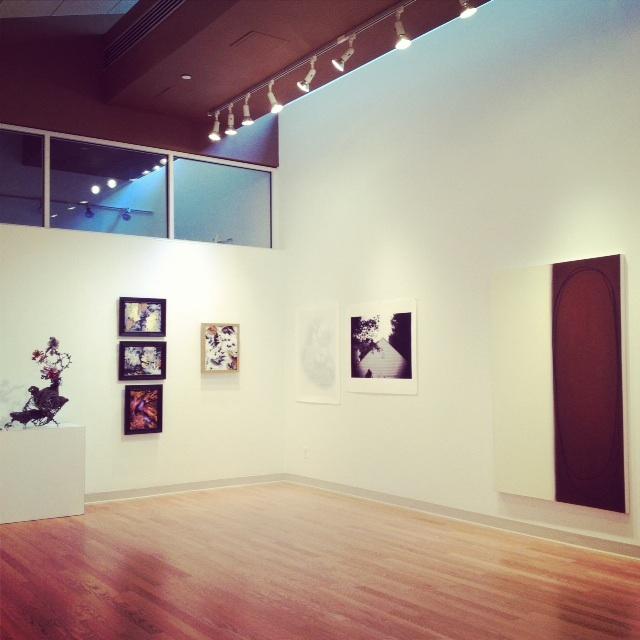The time has once again come for Loyola’s visual arts faculty to showcase their own work in the Julio Fine Arts Gallery at the Faculty Biennial show.
This year’s show features the work of 10 artists from the studio art and photography departments, including several new faculty members.
Chris Walker’s background is in photojournalism, which comes across strongly in his portraits of small-town teenagers. All three photos, CJ Brock, 16; Bicknell, Indiana, Luke Sermershein, 15; Jasper, Indiana and Tyson and Tiffany; 16; Carmi, Illinois, are arresting black and white prints. Only one subject out of four is smiling; all of them are looking directly into the camera, almost directly in the center of the frame. The sharp contrast of light and dark tones and the foreground focus convey an incredible depth of personality in people whom the mainstream would likely ignore.
Dan Schlapbach and Mary Skeen each take a more experimental approach. Schlapbach uses a wet-plate process to create ambrotypes, positive images on glass plates. He takes it one step further, however, by having one image in the frame and a second image on the glass in front of it, creating a three-dimensional effect. Skeen’s work takes what is thought of as the most realistic medium, digital photography, and distorts and abstracts it with motion blur and faded tones. Her pieces, Close Your Eyes and The Burning Parts, are thus more emotionally evocative than they are real-world depictions.
The work of Jon Malis is the most abstract of all, with its faded, unclear subjects evocative of barren landscapes. The ambiguous subject matter invites the viewer to a closer inspection.
Continuing with the abstract, Carol Frost’s work is strongly expressionistic. Her enormous oil painting contains rich, neutral colors and a soft shape; it is aptly titled Grace.
Mary Beth Akre’s work has long been focused on nature and landscapes, though these pieces represent an impressive departure from her usual paintings. Though still depicting natural subjects, these encaustic (hot wax) paintings take a much more narrow focus, depicting just small sections of the world around us. Akre approaches a kind of up close abstraction while maintaining the precision of technique characteristic of her work.
Abstraction is not a feature of Chris Lonegan’s work, which is painstakingly detailed and even a little macabre. His painting Masks is exhibited with earlier drawings of each individual mask, forming a halo around the painting and allowing for a rare glimpse into the artistic process. These sketches almost serve to soften the somewhat frightening blow of the painting, reminding the viewer that they are just paint on canvas.
While Lonegan’s work borders a little on the surreal, Nicole Fall’s is firmly planted in unreality. Her cast bronze sculpture “Fingerpede” is reminiscent of a creature from a Vincent Price movie; the elaborate and colorful “Undersea Narrative” stands perched as though ready to skitter around on welded steel toes. There is an impressive energy in the clay and metal sculpture.
Sarah McNeil’s work, “Topoanalysis,” also features sculpture, integrated with a projection and sounds for a mixed media installation. Extremely realistic looking trees, no more than a foot high, are set on white bases that almost look like Seuss-esque trees themselves. They cast shadows on a projection of a white house whose lights blink on and off as crickets chirp in the background.
Janet Maher’s work, though two-dimensional, is no less dynamic. Incorporating mixed media, digital collage and found objects, Maher creates works of art out of the combination of disparate, frequently everyday objects. It is this combination of otherwise unremarkable parts that the artistic whole arises.
The Faculty Biennial will be showing at the Julio Fine Arts Gallery from October 24 to December 8.







































































































